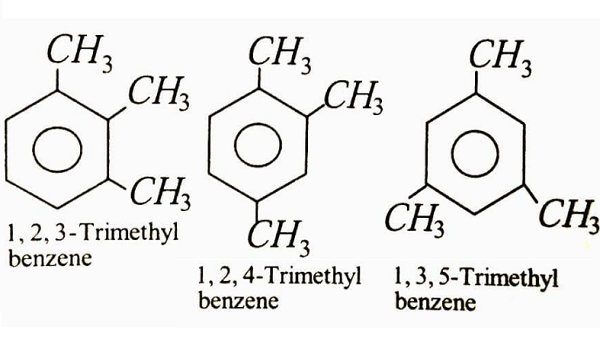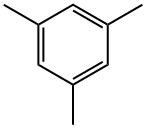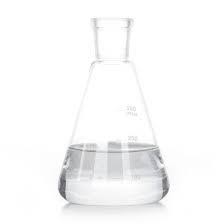An investigation into the toxicity of mesitylene
Description
Trimethylbenzenes exist in three isomeric forms: 1,3,5-trimethylbenzene (CAS 108-67-8, mesitylene), 1,2,4-trimethylbenzene (CAS 95-63-6, pseudocumene), and 1,2,3-trimethylbenzene (CAS 526-73-8, hemimellitene).

These three Trimethylbenzenes occur naturally in petroleum deposits and are standard components of petroleum refinery distillation fractions such as white spirits, high flash naphta, high aromatics and gasoline. They are found in mixed aromatic hydrocarbon solvents (C9 aromatics) used in surface coatings, printing and inks, and cleaners. Isolated pseudocumene is an intermediate in the production of trimellitic acid. Occupational and general population exposure to trimethylbenzenes may result from their widespread use in solvent and paint thinner preparations and from their presence as an additive in gasoline. Various indoor and outdoor air samples were shown to contain vapors of trimethylbenzenes, e.g., emissions of waste incineration plants, automobile exhaust, and working areas of painters, printing workers, and operators in the petroleum industry.
Uses
Mesitylene appears as a colorless liquid with a peculiar odor. Insoluble in water and less dense than water. A flash point near 123 °F. It may be toxic by ingestion and inhalation. Mesitylene is used in the laboratory as a specialty solvent. Mesitylene has been used as a developer for photo patternable silicones in the electronics industry due to its solvent properties. The three aromatic hydrogen atoms of the compound are in identical chemical shift environments. The effects of mesitylene on health, mainly developmental or neurological toxicity, were evaluated only in vitro and epidemiological studies[1]. However, mesitylene is often used as a solvent in industrial processes, and inhalation represents the first exposure route.
Toxicity
The developmental toxicity of two trimethylbenzene isomers, mesitylene (1,3,5-trimethylbenzene) and pseudocumene (1,2,4-trimethylbenzene) was studied in Sprague–Dawley rats following inhalation exposure. Pregnant rats were exposed whole body to vapors of mesitylene (0, 100, 300, 600, and 1200 ppm) or pseudocumene (0, 100, 300, 600, and 900 ppm), 6 h/day on gestational days (GD) 6 through 20. A significant decrease in maternal body weight gain and food consumption was observed at concentrations of 300 ppm mesitylene, 600 ppm pseudocumene, or greater. Fetal toxicity, expressed as a significant reduction in fetal body weight, occurred at 600 and 1200 ppm mesitylene and at 600 and 900 ppm pseudocumene. There was no evidence of embryolethal or teratogenic effects following inhalation exposure to either of these chemicals. In summary, the no-observed-adverse-effect-level (NOAEL) for maternal toxicity was 100 ppm for mesitylene and 300 ppm for pseudocumene, and the NOAEL for developmental toxicity was 300 ppm for mesitylene and pseudocumene[2].
References
[1] Clémence Méausoone. “Toxicological responses of BEAS-2B cells to repeated exposures to benzene, toluene, m-xylene, and mesitylene using air–liquid interface method.” Journal of Applied Toxicology 41 8 (2020): 1262–1274.
[2] A.M. Saillenfait. “Developmental toxicity of two trimethylbenzene isomers, mesitylene and pseudocumene, in rats following inhalation exposure.” Food and Chemical Toxicology 43 7 (2005): Pages 1055-1063.
You may like
Related articles And Qustion
Lastest Price from Mesitylene manufacturers

US $0.00-0.00/KG2025-04-21
- CAS:
- 108-67-8
- Min. Order:
- 1KG
- Purity:
- 99%
- Supply Ability:
- 10 mt

US $75.00/KG2025-04-10
- CAS:
- 108-67-8
- Min. Order:
- 100g
- Purity:
- >99%
- Supply Ability:
- 300tons




